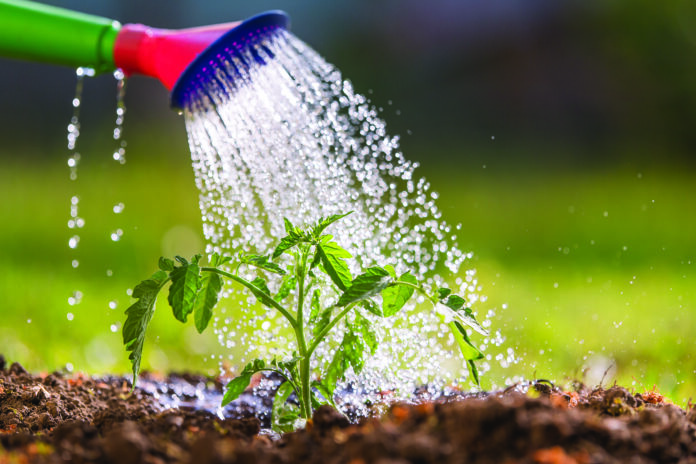SOURCE: vegogarden.com (edited)
When it comes to moisture levels in your garden, looks can be deceiving. Your soil may appear moist, and even feel moist on the surface, but unless the moisture goes deep enough to reach your plants’ roots, it’s not doing your veggies or flowers any good.
The best way to make sure your plants are getting the water they need is to go deep: Check moisture levels about six to eight inches beneath the ground with your finger. If the deeper soil feels dry, it’s time to irrigate.
Deep watering that saturates the soil is much better than short daily sprinklings that do little more than dampen your garden’s surface. The latter approach, known as surface watering, wastes water and can even damage your plants. Longer deep-watering sessions can be done just one to three times a week, depending on your soil conditions.
Surface Watering: Lose-lose
Because water tends to be absorbed quickly when it’s first applied to soil, it’s easy to assume that it travels to plants’ roots at the same rapid pace. But the absorption process moves fairly slowly below ground with soil taking in water one layer at a time.
If your roots aren’t getting the water they need, they’ll be vulnerable to root shock, which can stunt growth and weaken overall plant health. Surface watering also encourages shallow root growth with roots remaining near the moist topsoil, which makes plants more susceptible to drought stress if you miss a watering or two.
Moist surface conditions can also attract pests and certain fungal diseases. Left unchecked, these can damage or destroy plants.
Another reason to avoid surface watering is runoff. When water flows over the soil surface instead of penetrating into the ground, it takes away valuable topsoil, nutrients, and soil amendments (like compost). That leads to erosion and soil degradation.
Benefits of Watering Deeply
Deep watering ensures your plant roots are getting the hydration they need. It encourages the growth of deep and extensive root systems, making your plants more resilient and better able to access nutrients in deeper soil layers.
Your plants will also be better established with roots that are stronger, better anchored in the soil, and less prone to wind damage or toppling during storms. Deeper roots are better able to compete with weeds for water, nutrients, and space.
How to Water Deeply
So, how do you go about watering your garden deeply? First, remember to check your soil’s moisture level with your fingers about six to eight inches down. Water when your soil feels dry.
When you water, don’t blast the soil; that’s only going to slide off the surface. Provide a steady, light stream and give the soil time to absorb it. Try checking the soil’s moisture after about 30 minutes, and if the water hasn’t soaked down six to eight inches, water again and check it again in another 30 minutes.
A Few More Guidelines:
• Try to water early in the morning or in the evening to minimize evaporation.
• A soaker hose will help you apply water directly and steadily to your soil.
• Keep in mind that weather conditions, wet or dry, might require an adjustment to the frequency of your watering.
A final tip: Topping your garden soil with mulch will help lessen evaporation and keep your soil moist for longer periods.


